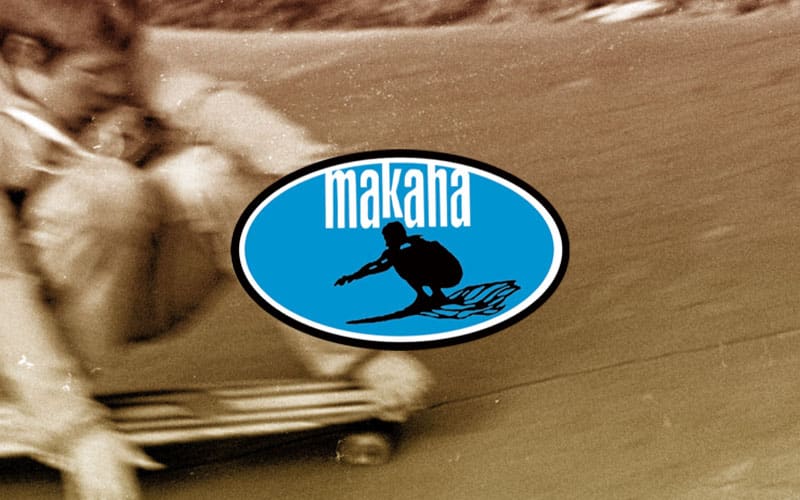The skateboard wheel has gone through an evolution from…
- Steel
- Clay
- Urethane
In 1973, the polyurethane wheel revolutionized skateboarding.
It had what steel and clay wheels lacked: traction, which opened the door for new riding styles to emerge. Urethane was a catalyst for the rebirth of skateboarding in the 70s.
Urethane Wheel Backstory
Frank Nasworthy grew up in Norfolk, Virginia. He got caught up in the skateboard craze that swept the country. He, too, bought a board with clay wheels. Although Frank remembers the skateboard as a “fun thing,” his main passion was surfing.
Frank remained a committed surfer when skateboards died out a few years later.
In 1970 he found himself in Washington, DC. In the summer of that year, one of Frank’s high school friends, Bill Harward, came around for a visit. Bill mentioned he was going to visit another friend who lived in Virginia.
So Frank and Bill set off on the trip to Purcellville.
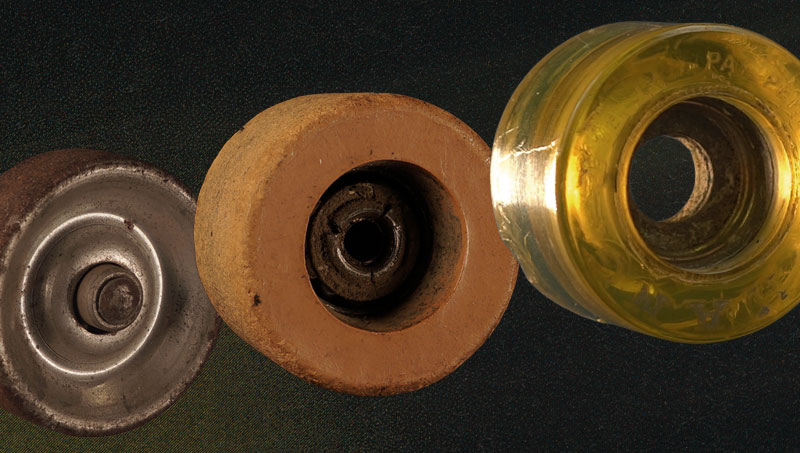

Discovering Urethane Wheels
The friend’s father ran a backyard shop called Creative Urethanes.
Urethane is a petroleum-based product developed in the 1930s in Germany. It has incredible resiliency and is very durable. As Frank was walking through the shop, he spotted some large, 55-gallon drums filled with what appeared to be roller skate wheels.
When Frank asked what the wheels were used for, the owner explained that he had received a request from a chain of rollerskate rinks called Roller Sports to make a rollerskate wheel that wouldn’t wear out.
He was making small quantities just for the rinks.
At that moment, Frank realized, “these wheels would fit our Hobie skateboards.”
The owner was happy to oblige — the wheels he had seen in the drums were seconds. That day, Frank Nasworthy took home 30 sets of wheels.
Frank and Bill returned to Washington and replaced their clay wheels with new urethane ones.
Magically, the ride became smooth, stable, and quiet.
As Frank says, “We had free rein over the entire Washington, DC, area.”
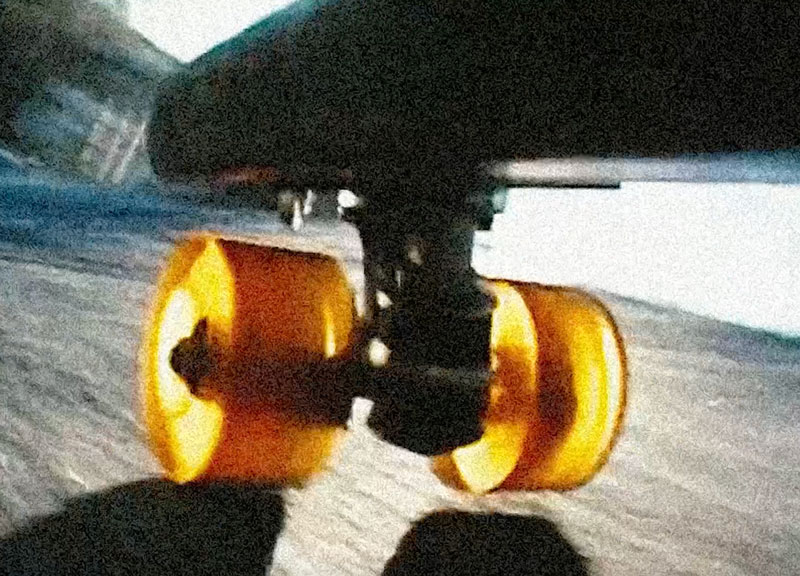
People who tried their urethane-wheeled boards were astounded by the ride. Note that these wheels did not have precision bearings like today’s skateboard wheels; they utilized loose ball bearings (16 per wheel).
Moving To California
In 1971, Frank and Bill decided to head out to California. Their sole reason was to go surfing.
As they traveled up and the down the coast, they stopped by the town of Encinitas. It was here that Frank decided to stay. He found a place to live, surf, and got a job in a restaurant.
Life was going well.
Taking A Leap Of Faith
But Frank hadn’t forgotten about the urethane wheels. He began to think there might be a market for them and decided to contact Creative Urethanes to see if they could send him more.
Their response was that they couldn’t sell Frank the other customer’s wheels — he would have to design a wheel for himself. Frank studied engineering and design in college, so he created his own urethane wheel.
After Frank designed the first urethane skateboard wheel, he had to place his first order.
“Gotta buy a thousand,” was the response from Creative Urethanes.
Although Bill Harward was now stationed in Los Angeles, he had stayed in contact with Frank. On one of his visits down to Encinitas, the two discussed naming the wheels. As they talked, a dog food commercial appeared on television, and inspiration struck.
They realized that this was precisely what they had done for the skateboard wheel — give it a sense of luxury, a Cadillac-type of ride.
The first set of Cadillac wheels was sent out to Frank in 1972.
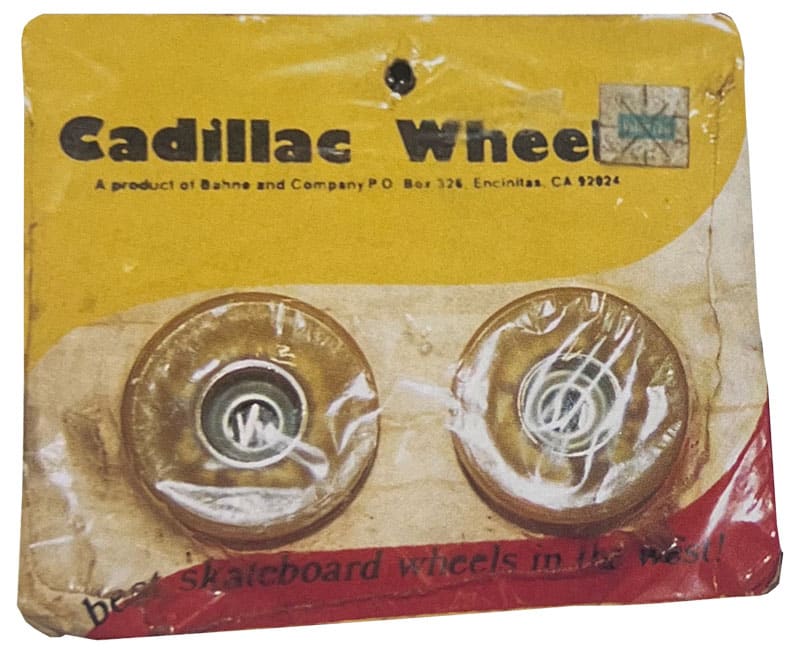
Convincing Shops
He proceeded to load up his car and drive around to two hundred surf shops in Southern California. Although the skateboarding craze had died, there were still pockets of retailers who sold boards. Frank’s sales pitch focused on getting people to replace their clay wheels with his urethane ones.
Unfortunately, shop owners were not enthused.
As Frank explains, “Shop owners would say, ‘I can buy a clay wheel for much less money than your urethane.“
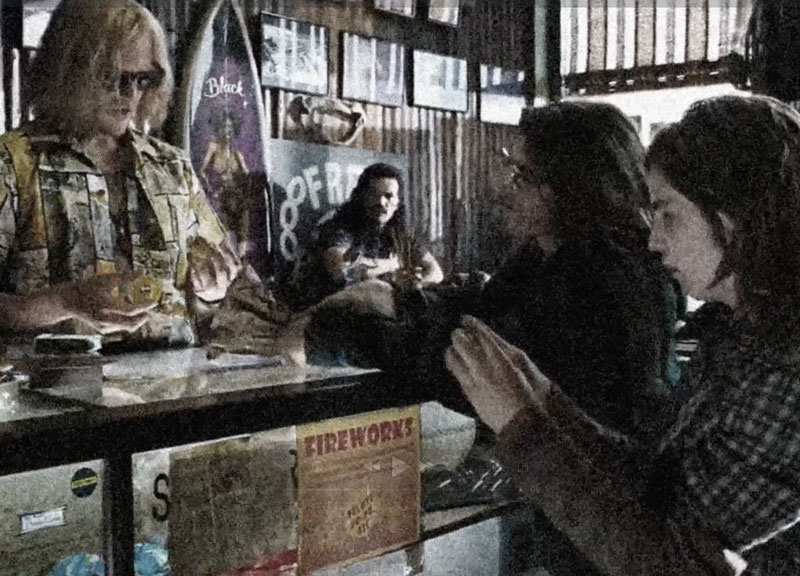
A set of Frank’s wheels would retail for $8, a high premium — remember, this was at a time when you could buy a complete skateboard for almost $8. But eventually, Frank was able to find a few customers willing to give his Cadillac Wheels a try.
Finding Success
Frank gave a few sets of wheels away to create more interest and promote his product. Slowly, more and more people began trying the wheels, and the word spread.
“It was a classic snowball situation,” says Frank.
An order was placed for 2,000 more wheels, followed by an order for 4,000 wheels. He took out an advertisement in Surfer magazine, which boosted interest even higher.
In 1974, just two years after he placed his first order, Frank decided to pursue his skateboard-wheel career full-time. Cadillac Wheels became extremely popular, and orders reached tens of thousands of dollars.
One company Frank was selling to directly was Bahne Skateboards. Bill and Bob Bahne were brothers who manufactured high-quality surfboards. Since the Bahne brothers knew how to work with fiberglass and were skilled at lamination, it was only natural to take this expertise and start creating their own line of flexible skateboards.

Growing Pains & Competition
Frank was enjoying the tremendous success of his Cadillac Wheels, but it was also creating a problematic situation for his small business.
After all, a $50,000 wheel order can be pretty hard on your cash flow. And by this time, the competition had begun to take notice of Cadillac.
Roller Sports, the company for which Creative Urethanes had originally manufactured roller-rink wheels, decided to enter the picture.
In fact, Roller Sports didn’t merely enter the picture; they bought the entire production of wheels from Creative Urethanes. This was in late 1974, and Roller Sports went on a major marketing/advertising blitz to compete with Cadillac Wheels.
When Roller Sports decided to buy the entire production from Creative Urethanes, Frank realized he needed someone else to produce the wheels.
Partnership With Bahne
“I wanted to continue in the skateboard industry,” explains Frank.
He decided to join up with Bahne Skateboards and started working on new wheels.
The Bahne/Cadillac partnership was responsible for some of the most memorable skateboard promotions the world has ever seen.
Bill Bahne designed special ramps that were awesome in size. Imagine a ramp made from wood, 150 feet long, 15 feet high, and 30 feet wide. Bahne’s ramp first appeared at the Del Mar Championships in the spring of 1975.
Bahne’s boards, trucks, and Cadillac Wheels were an enormous success.
As Frank recalls, “We put all our money into advertising”
There is no question that Bill Bahne’s and Frank Nasworthy’s relentless promotion of skateboarding in the 70s was a significant factor in its resurgence.
However, the companies’ profits were being eaten up by all of their marketing promotion.
The Rise Of Precision Bearings
Frank also realized they were reaching a critical point on the manufacturing side of their business. Skateboarders desired a soft wheel but found the bearing racers would pop out if it were too soft.
Conversely, if a wheel held the bearing racers in place, it was usually too hard and wouldn’t provide enough traction. The decision was made to mold a polycarbonate hub to the wheel to ensure the racers would not pop out.
“It was a good idea,” says Frank, “but we used injection-molded urethane instead of therma set.”
Injection-molded urethane was not as smooth a ride as therma set. Cadillac also faced competition from Road Rider Wheels. These wheels used precision bearings instead of Cadillac’s loose ball bearings.
The Road Rider #2 wheel was a premium product and was considerably more expensive than the Cadillac Wheel. In the same way that Frank had replaced clay wheels with his urethane wheels, Cadillac’s loose ball bearing wheels were being replaced by premium precision wheels.
“We realized it was a bad decision,” says Frank. “Our wheels were dogs compared to Road Rider.”
Unfortunately, mass production being what it is, Bahne/Cadillac had a million wheels to contend with. In due course, Bahne pulled out of the skateboard industry. Road Rider wheels became a market leader, along with Kryptonics and Sims.
Frank’s New Direction
As things wound up at Bahne/Cadillac, Frank moved to Florida with a new goal: to design and build a skateboard park filled with challenging and imaginative runs. The Cadillac Wheels Skateboard Concourse took tremendous time and energy to plan and build.
Frank again used his innovative mind to come up with something unique. When the skatepark opened in 1978, it was truly state of the art, with impressive 15-foot pools and enormous bowls.

However, the park was outside and was constantly being shut down due to heavy amounts of rain. Along with uncooperative weather, insurance for the park was difficult to obtain.
Despite Frank’s best efforts and the enthusiasm of the skateboarders, the park was shut down in 1979.
As skateboarders, we owe a lot to Frank Nasworthy. His ability to see past the clay wheel changed skateboarding forever.
Shout out Frank, you legend!
This originally appeared in my book, The Concrete Wave: The History of Skateboarding.


